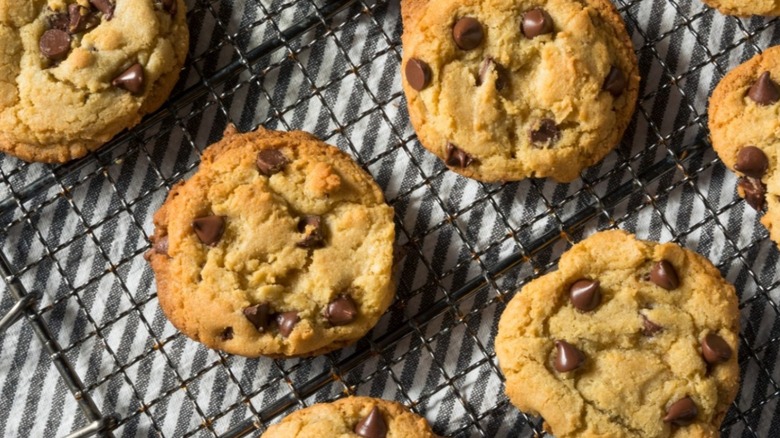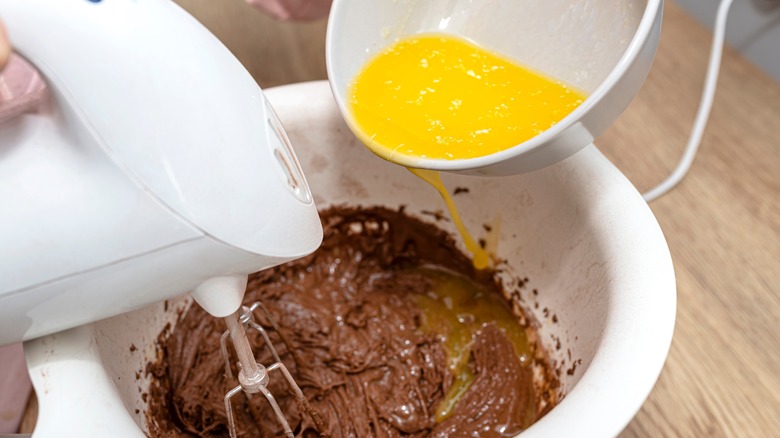For The Chewiest Cookies Possible, Melted Butter Is The Key
The perfect cookie is chewy and fudgy with slightly crispy edges. It shouldn't be too hard to bite into or so soft that it's mushy. But who knew we've been baking cookies all wrong by softening butter instead of melting it before combining it with other recipe ingredients?
There are tons of unexpected cookie ingredients out there to elevate our baking, but using melted butter is probably one of the most overlooked. Yet, it offers more benefits to cookie texture than softened butter, preventing homemade cookies from being too cakey, which is when they're fluffy instead of dense and chewy.
We have cookbook author Jesse Szewczyk to thank for this hack. As he tells King Arthur Baking, "About halfway through writing [my book] 'Cookies,' I started using melted butter instead of creaming it. By switching up the technique, I omitted all the extra air that gets incorporated into the dough during creaming, and as a result, the cookies made with melted butter were significantly chewier and fudgier than those made with creamed butter."
Why melted butter makes the chewiest cookies
Although some baking recipes insist on using softened butter, it's possible to adapt any cookie recipe to use melted butter instead (you can simply pop it in the microwave) and reap the rewards. To do it like a pro, Szewczyk recommends using the same quantity of butter from the original cookie recipe and melting it so that it turns into liquid, but careful not to overheat it so it doesn't turn brown. This prevents it from becoming bitter. Then, the butter can be combined with sugar and the rest of the recipe can be followed as per its instructions.
Melted butter is also easier to mix into dry ingredients, which means it brings more moisture to the cookie dough. This moisture is important because it produces more stretchy gluten in the dough that holds the cookie together, as Science News Explores reports, so the cookies will be dense and chewy rather than cakey. Since cookies don't contain yeast to keep their dough stretchy, this gluten comes to the rescue to ensure greater elasticity for the best chewiness!
Tips for using melted butter in cookie recipes
When melting butter, it's essential to combine it properly with the sugar so that the dough will be airy and soft, which is what we want for a perfect cookie. But, it's important not to overwork the cookie dough, as this puts too much air into it that will cause the cookies to rise and then sadly fall. The result? Flat cookies that don't have the chewiness we want.
When the dough's ready to be rolled into cookies and baked, it should chill in the fridge for about an hour. This will prevent the cookies from flattening and spreading out on the baking tray in the oven, which usually occurs as a result of the butter's fats not having had a chance to cool down. This is especially important when using melted butter since it's already a bit warmer. Chilling the dough prior to baking, therefore, ensures that the cookies will rise at a slower rate during the baking process, maintaining their shape better.
Although melted butter is ideal for cookie and brownie recipes to make them denser, richer, and more flavorful, it shouldn't be used for all baking tasks. For example, it's not a good choice when making pies — these require cubes of butter which must be pressed into the flour with one's fingertips to create flakiness. So, while greasy dough is a no for pies, it's a yes if you want to take your cookies to the next level.


